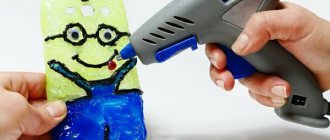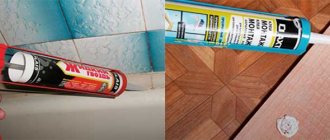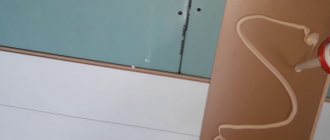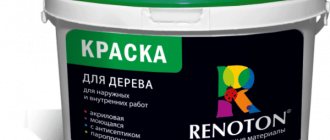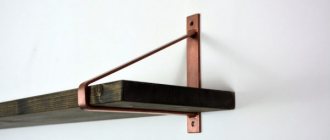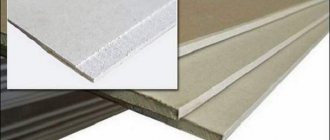Most hot melt guns that use hot melts for gluing are very similar to each other, both in the operating principle and in the general design of the design. The only differences are the quality of materials and workmanship, service life and ergonomics. This coincidence can be explained simply; the main secret of high-quality gluing lies in what kind of glue gun refills are used in the work. Manufacturers of branded pistol brands always equip their models with branded adhesive materials. This is not charity or advertising. This is done so that the user gets an idea of how the machine works using high-quality hot-melt glue, what consumables to look for, and how to choose a glue stick for a glue gun.
What is a glue stick
Consumables for a glue gun are flexible polymer rods up to 20 cm long and 7 mm or 11 mm in diameter. Thinner rods are usually used for soldering with low-power home soldering guns. Hot-melt glue rods with a diameter of 11-12 mm are used for more powerful and productive guns, most often professional and semi-professional types.
The material is elastic and at the same time durable, it is very difficult to break the glue stick with your hands; you can bend it slightly, and some brands can even be rolled into a donut.
Anyone who regularly uses a hot glue gun at home or in professional activities notes some features of the consumable:
- The adhesive cartridge placed in the gun holder does not melt and does not lose its properties, even if the gun sits in standby mode for half a day. At the end of the work, the thermal rod remains in the holder and does not need to be removed or replaced. If you need to glue, the gun is simply plugged in, and after five minutes the device is ready for use;
- There is no surface wear, hot melt material does not cause erosion, oxidation or burning of the melting chamber. The gun will work until the heater burns out;
- The shelf life of consumables with proper storage is practically unlimited; the polymer is not afraid of freezing or short-term heating without melting. Some brands of glue sticks used for high-strength, rigid adhesives can absorb moisture. In this case, it is enough to dry the adhesive material in the sun, and it is ready for use;
- The relatively soft rod retains its qualities until it enters the melting chamber and turns into a melt. During the cooling process, structural transformations occur in the polymer; from an elastic and soft material that feels very much like a piece of hard silicone, the drop turns into a very hard and rigid “glass” bead.
The material of the rods is not thermosetting; when reheated, it can be melted, but due to the increase in viscosity, it is almost impossible to squeeze it through the nozzle of the melting chamber; a very large force will be required.
Why do you need to divide hot melt adhesive by diameter?
This also determines the choice of the diameter of the glue gun rods by the developers. The smaller the diameter, the less effort is required to squeeze the melt out of the melting chamber. To work with the refills for a 7 mm glue gun, very little effort is required, which means that the gun can be used by almost any adult or even a child.
Seven-millimeter rods are used in low-power and non-hot hot glue guns with small dimensions and weight. The melting point of such material rarely exceeds 160°C, so the gluing device is very light and economical. They are convenient for gluing paper, film, packaging goods, and temporarily fixing parts on the desktop. If you need to glue tiles on the ceiling, it is much more convenient to do this with a glue gun with a seven-millimeter “cartridge”.
It seems convenient, but the productivity is only 10-15 g/min, which is enough for spot gluing, but not enough for full gluing. Therefore, for gluing metal, glass, wood, and plastic, 11 mm glue gun rods are used. In addition to the increased productivity to 25-30g/min, the board temperature increases from 160°C to 195°C. The glue gun turns out to be twice as large and heavier, but it can glue almost anything that can withstand high temperatures.
Note! Glue sticks of 7 and 8 mm, as well as 11 mm and 12 mm are available for sale, which creates some confusion when purchasing consumables.
Some glue gun manufacturers deliberately produce very inexpensive models with reduced tube diameters, for example, 7 mm and 11 mm, encouraging buyers to purchase only branded sticks. Therefore, before making a purchase, you should clarify three parameters:
- Melting temperature of the glue stick and compare it according to the passport with the characteristics of the gun;
- For what materials is the selected brand of hot-melt adhesive rod intended?
- The exact diameter of the rod, otherwise it may happen that your glue gun has a 7 mm clip, they offer to buy 11 mm.
You can even take with you an old package of thermal rods or look at the passport for the gun, which should contain all the necessary data on consumables. Otherwise, you will not be able to exchange or repair a burnt hot-melt glue gun under warranty.
If you run out of glue
Let's consider the situation the other way around: there is a useless hot-melt gun without suitable stickers, and you need to stick something “here and now”
We put aside the orphaned tool until we purchase suitable consumables for it and turn our attention to another heating device that is no less universal in use - a hair dryer
Of course, hair models would be inappropriate here, meaning a professional construction hair dryer that produces high air temperatures. Here you can heat the glue right at the joint. By the way, the glue itself is literally lying under your feet.
We offer the 2 most common options for making hot-melt adhesive with your own hands:
Foamed polypropylene or polyethylene can occasionally be found as packaging material, but most often it is found in construction and finishing works as heat and sound insulation. The connection is not so strong as it is flexible, and is not afraid of shocks and vibrations.
The well-known plastic bottles that fill landfills all over the Earth are also suitable as an adhesive material. It takes quite a long time to heat the entire bottle with a hairdryer, so it is better to cut a plate of the required size at the gluing site.
Both options are unstable at high temperatures, but are suitable for most jobs where the use of conventional hot-melt adhesive is sufficient. This way, you recycle waste and have a virtually inexhaustible supply of glue.
How to choose the right glue sticks for the job
Sometimes the situation is the opposite, for example, you have to look for a solution what to do if the rods are small and the glue gun is 11 mm. The situation is not the most critical, but high-quality glue sticks are quite expensive, and it would be unwise to refuse to use them. For example: one universal Boshev adhesive material for 11 mm costs 600-1000 rubles. per piece, but it’s enough for 4-5 sticks.
If the rods are smaller in diameter than the pistol clip, then the problem can be solved by slightly improving the trigger:
- The pistol body is disassembled and the swinging frame attached to the trigger is removed;
- The ring on the frame is wound with thin, 1-2 mm wire in PVC insulation;
- Reassemble the device body in the reverse order.
Important! If all manipulations are performed correctly, the gun will work flawlessly; moreover, the force on the trigger will be half as much as usual, so the work will be more comfortable.
It is clear that any experiments with glue guns are an extreme case. There is a risk of damaging the most vulnerable component - the heating system; it will not be possible to repair the hot glue gun, and the expensive device will be scrapped.
What are glue sticks made of?
To make the principle of hot melt bonding more universal, manufacturers produce several main types of glue sticks:
- Ethylene vinyl acetate polymer has high fluidity and very high adhesion; it adheres well to any porous surface. The melting point is only 78-80°C, so EVA is used only in low-temperature glue guns. The color of the ethylene vinyl acetate thermal rod is whitish, translucent;
- Polyamide plastic is characterized by an increased melting point of 150-155 ° C, the adhesive melt is very viscous and viscous, but after the glue hardens, a seam is formed that is 40-50% stiffer and stronger than EVA. Most often, PAP is used in the industrial assembly of cladding and upholstery for automobiles and household appliances;
- Polyolefin material is the most refractory of all hot melt adhesives, the melt formation temperature is 180°C. The seam is very rigid, with low adhesion, so it is used mainly for spot gluing packaging;
- Modified silicone, the most plastic and fusible, has a melting point of up to 100 ° C, has high transparency, the frozen seam perfectly withstands tearing and shearing loads. A silicone stick for a glue gun is used for gluing fabrics, linoleum and in handicrafts.
High- and low-density polyethylenes also have very similar technological characteristics; often the cheapest adhesive sticks are made from granulated polyethylene. The quality of the seam is poor; when working on cheap machines, an oily smell may appear in the air.
Melting temperature
The composition of glue sticks can vary significantly, which affects their melting point.
Products created on the basis of EVA melt already at +80°C, and the operating temperature is considered to be within the range of +120... 150°C. It is recommended to use such rods for the household type of glue gun. Rods consisting of polyamides and polyolefins begin to soften at +155°C, and the operating temperature for this type is +180... 200°C. Such rods are already used in professional equipment that can withstand heating up to +500°C. To glue surfaces that can withstand heating to high temperatures, high-temperature compounds are used.
The choice of rods must be made based on the type of surfaces with which the work will be done and the equipment that is planned to be used in the process.
Classification of glue sticks
In order to simplify the handling of hot-melt adhesive materials, a color classification of consumables has been adopted. That is, you can choose the appropriate version of the hot-melt base based on the manufacturer’s markings and the color of the rod. Often consumables are sold individually and without packaging, so the main reference point remains the color of the polymer.
White and yellow glue sticks
Milky white and opaque yellow hot-melt adhesive materials are produced on the basis of polyethylene and EVA, the main purpose is gluing paper, ceramics, wood, you can even glue ceiling tiles. Melt adhesion is lower than standard, but it is quite sufficient for fixing lightly loaded parts. The main advantages of the material are its low price and low melting point, so when working with a gluing machine, the risk of burning through the bonded surface is minimal.
Transparent white thermal rods are produced on the basis of ethylene vinyl acetate, which is considered a universal adhesive material that can be used to glue everything. Unlike previous rods, the transparent white seam turns out to be a little softer, with high adhesion, it can even stick to the skin of the hands and clothing, if the melt misses the target, after hardening it can be easily removed from the surface with a blade.
Crystal-transparent rods are usually produced on the basis of modified silicone. It can be used to glue wood, but is most often used to join fabrics, since at a low melting point the melt penetrates well into the surface and is practically invisible after hardening.
Transparent yellow adhesive thermal sticks are made from polyamide, which is very rigid, has low adhesion and can absorb moisture. Used as a universal hot melt adhesive for wood, plastic and metal.
Colored glue sticks
In addition to universal hot melt adhesives, specialized brands are available, for example, a black glue gun stick. Two types of hot-melt adhesive are produced under this color marking. The first is used exclusively as a high-strength and resistant waterproofing, for example, to seal seams at the joints of flanges and pipe fittings. The material is quite elastic, so loads do not lead to destruction of the cushioning layer.
The second option is glue sticks to enhance the insulation of contacts in electrical wiring systems. During the cooling process, hot melt adhesive provides very good adhesion to copper, brass or aluminum surfaces and at the same time slight shrinkage. The result is a virtually non-porous and durable coating.
Both versions of the black hot melt adhesive stick are made from EVA, so the hot melt adhesive is highly versatile and can be used for other purposes if necessary. Some Chinese manufacturers manage to produce black adhesive thermal rods, which, according to the labeling, are suitable for absolutely all materials, from metal to glass.
In addition, sets of 12 or 24 colors are made on the basis of EVA. In terms of their characteristics, colored rods are practically no different from universal ones, but they have one very valuable advantage. When gluing a colored surface, you can select a rod that matches the color and make the seam almost invisible.
Application area
To solve certain problems, rods are produced in both a wide range of shades and transparent ones. This is very convenient for those who love handicrafts. Having selected the desired color, the product will look solid, no traces of glue will be visible. Models of filled rods have appeared.
For example, glitter and mother-of-pearl are added to the mass. The glue itself becomes a decorative element of the product, part of the composition. Thermal gun can be used in construction and repair. However, it is worth remembering that setting time is limited. After application, it is advisable to fix the part in place in the first few seconds.
There are also some restrictions. For example, where heavy loads are expected, it is not recommended to use a hot-melt adhesive connection; it is not designed for this.
You can glue decorative elements to shoes, but the soles will not last long. Do not use a gun to secure power structures during construction and repairs. It is not recommended to apply glue to plasters and putties without first treating them with primers and paints.
Sealing and insulation of seams
During operation, cracks and gaps appear in various structures. They appear in window and door systems, openings, and shafts. Often such a defect occurs in finishing materials. In addition to the untidy appearance, there are also undesirable consequences in the form of drafts and further destruction of the structure.
If there are no building mixtures or sealants at home, but you have a glue gun, then you can quickly solve this problem. With its help, you can easily make the desired connection and seal the seams. It is recommended to purchase special black or gray rods for this work. But first you need to clarify whether the gun is capable of maintaining the required temperature.
Video: Glue gun - why and how
The edges of the crack are cleaned of debris, foreign substances, and degreased. Then, after heating the gun for the required time according to the instructions, fill the seam. The result is reliable, durable insulation.
After cooling, you can cut off excess glue with a knife. The connection is not afraid of moisture, is not subject to corrosion, and will not emit substances harmful to health, so it can be used both in utility rooms, and in kitchens and children's rooms.
Tile
What to do when a tile falls off at home? You can get to the nearest hardware store and buy the required mixture. But it is usually sold in large packages and most of it will probably simply disappear. Repairs can be made with a glue gun.
Before starting work, you need to remove all remaining mixture from the tiles and the seat. It is advisable to do this even with a small margin, so that the tiles fall through with a small gap, no more than 1 mm.
Before applying the glue, it is recommended to warm the part with a hairdryer, and after installing it in place, hold it in the desired position for 2-5 minutes until it cools completely.
Furniture
The interior will lose greatly if any element is broken or missing altogether. Front parts of furniture often fail during use. Decorative decorations and overlays can be restored with hot glue. There is no need to fix the glass with a gun.
The operating temperature of the glue is from 105 °C to 200 °C. These are critical values for glass; it may crack or break. A wooden surface easily tolerates this temperature.
Excess glue can be easily removed from it later. It is not recommended to glue load-bearing structures and functional mechanisms of furniture. The loads are too great and the glue cannot withstand them.
